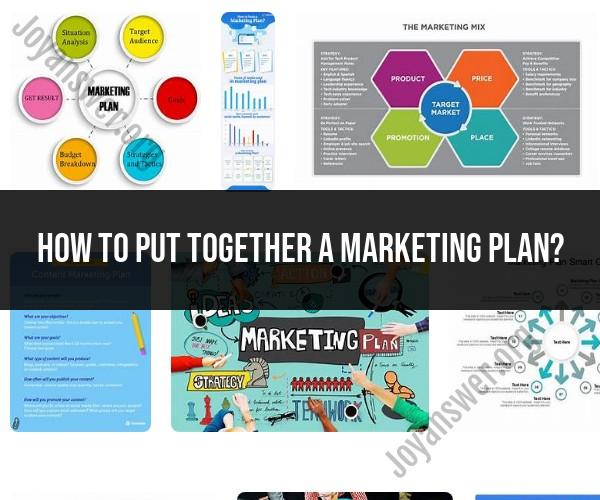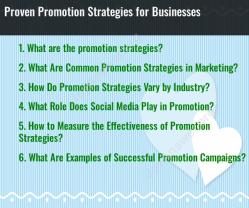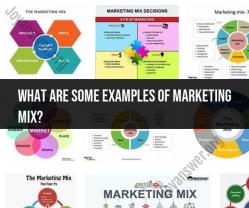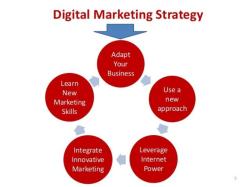How to put together a marketing plan?
Constructing a comprehensive marketing plan is essential for guiding your marketing efforts and achieving your business goals. Here are the steps to create an effective marketing plan:
Set Clear Objectives:Define your marketing objectives. What do you want to achieve with your marketing efforts? Objectives should be specific, measurable, achievable, relevant, and time-bound (SMART).
Market Research:Gather data on market trends, competitors, and consumer behavior. Utilize tools like surveys, focus groups, and analytics to inform your strategies.
Know Your Target Audience:Understand your ideal customers' demographics, psychographics, needs, and pain points. Create detailed buyer personas to guide your marketing efforts.
SWOT Analysis:Evaluate your organization's strengths, weaknesses, opportunities, and threats. This analysis helps you make informed decisions about your marketing strategies.
Positioning and Differentiation:Determine your unique selling proposition (USP) and identify how you will position your products or services in the market to stand out from the competition.
Marketing Mix (4Ps or 7Ps):Define your product, price, place (distribution), and promotion strategies. Consider additional Ps like people, processes, and physical evidence for service-based businesses.
Content Strategy:Create a content plan that outlines the type of content you'll produce, where you'll share it, and how it aligns with your goals and audience.
Digital Marketing:Develop a comprehensive digital marketing strategy, which may include social media, email marketing, content marketing, search engine optimization (SEO), pay-per-click advertising, and more.
Traditional Marketing:Don't overlook traditional marketing channels like print advertising, direct mail, events, and radio/TV if they align with your target audience.
Budget and Resource Allocation:Determine how much you're willing to invest in your marketing efforts and allocate resources accordingly. Ensure your budget supports your objectives.
Timeline and Milestones:Create a detailed schedule for your marketing activities. Establish milestones to track progress and adjust your strategies as needed.
Measurement and Analytics:Identify key performance indicators (KPIs) and set up tracking systems to measure the success of your marketing campaigns. Regularly analyze data and adjust your plan based on results.
Testing and Optimization:Continuously test different marketing approaches and optimize based on what works best. A/B testing can help refine your strategies.
Team Roles and Responsibilities:Clearly define who is responsible for each aspect of your marketing plan. Ensure everyone understands their roles and how they contribute to the overall objectives.
Contingency Planning:Be prepared for unexpected challenges. Develop contingency plans to address issues that may arise during your marketing campaigns.
Legal and Ethical Considerations:Ensure that your marketing efforts comply with all relevant laws and ethical standards, such as data privacy regulations (e.g., GDPR) and advertising guidelines.
Regular Review and Reporting:Schedule regular reviews to assess the effectiveness of your marketing plan and report to stakeholders. Use these insights to refine your strategy over time.
Adaptability:Markets are dynamic, so be ready to adapt your plan in response to changing circumstances, emerging trends, or shifts in customer behavior.
Remember that no marketing plan is truly "perfect," as it needs to be flexible and adaptable to evolving conditions. Regularly assess your results, gather feedback, and be willing to adjust your strategies to meet your objectives and better serve your target audience.
How to Create a Comprehensive Marketing Plan
To create a comprehensive marketing plan, you should follow these steps:
- Define your goals and objectives. What do you want to achieve with your marketing plan? Do you want to increase brand awareness, generate leads, or drive sales? Once you know your goals, you can develop strategies and tactics to achieve them.
- Analyze your target market. Who are you trying to reach with your marketing messages? What are their needs and wants? What are their pain points? The more you know about your target market, the better you can tailor your marketing messages to resonate with them.
- Research your competition. Who are your competitors? What are they doing well? What are they doing poorly? How can you differentiate your business from the competition?
- Develop your marketing strategies. These are your high-level plans for how you will achieve your marketing goals. They should include your target market, your unique selling proposition (USP), and your marketing channels.
- Create a marketing budget. How much money do you have to spend on marketing? It's important to be realistic about your budget and to allocate your resources wisely.
- Develop marketing tactics. These are the specific actions you will take to implement your marketing strategies. For example, your marketing tactics might include creating a website, running social media ads, or attending industry events.
- Measure and track your results. Once you start implementing your marketing plan, it's important to track your results so you can see what's working and what's not. This will help you to refine your plan over time.
The Components and Structure of a Successful Marketing Plan
A successful marketing plan should include the following components:
- Executive summary: This is a brief overview of your marketing plan that includes your goals, objectives, target market, and marketing strategies.
- Company overview: This section provides a more detailed overview of your business, including your products or services, your target market, and your competitive landscape.
- Marketing goals and objectives: What do you want to achieve with your marketing plan? Do you want to increase brand awareness, generate leads, or drive sales?
- Target market: Who are you trying to reach with your marketing messages? What are their needs and wants? What are their pain points?
- Marketing strategies: How will you achieve your marketing goals and objectives? This section should include your target market, your unique selling proposition (USP), and your marketing channels.
- Marketing tactics: These are the specific actions you will take to implement your marketing strategies. For example, your marketing tactics might include creating a website, running social media ads, or attending industry events.
- Marketing budget: How much money do you have to spend on marketing?
- Timeline: When will you implement your marketing plan?
- Metrics for success: How will you measure the success of your marketing plan?
Setting Goals and Objectives in Your Marketing Strategy
When setting goals and objectives for your marketing strategy, it's important to make sure they are SMART:
- Specific: Your goals and objectives should be specific and measurable. For example, instead of saying "increase brand awareness," you could say "increase website traffic by 10% in the next quarter."
- Measurable: Your goals and objectives should be measurable so you can track your progress and see what's working.
- Attainable: Your goals and objectives should be attainable, but challenging. If your goals are too easy, you won't be motivated to achieve them. If your goals are too difficult, you'll likely become discouraged and give up.
- Relevant: Your goals and objectives should be relevant to your overall business goals. For example, if your business goal is to increase sales by 15% in the next year, your marketing goals should be aligned with that goal.
- Time-bound: Your goals and objectives should be time-bound so you have a deadline to work towards. For example, instead of saying "increase website traffic," you could say "increase website traffic by 10% in the next quarter."
Implementing and Measuring the Impact of Your Marketing Plan
Once you have created your marketing plan, it's important to implement it and measure your results. This will help you to see what's working and what's not, so you can refine your plan over time.
To measure the impact of your marketing plan, you can use a variety of metrics, such as:
- Website traffic
- Lead generation
- Sales
- Social media engagement
- Brand awareness
You can use a variety of tools to track your marketing results, such as Google Analytics, HubSpot, and SEMrush.











